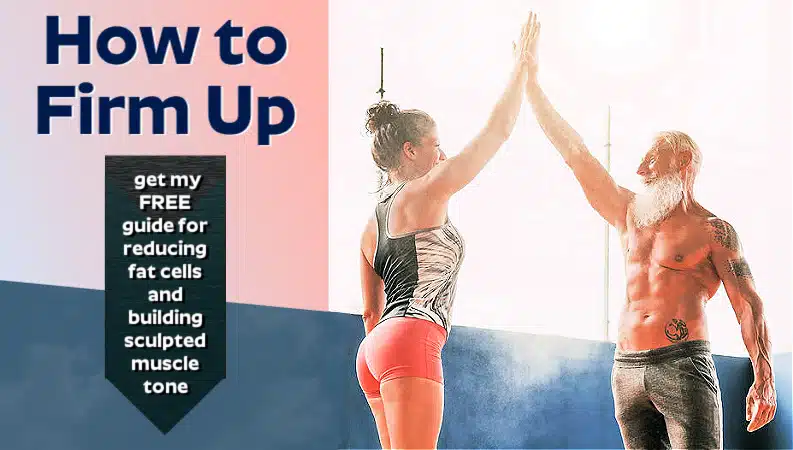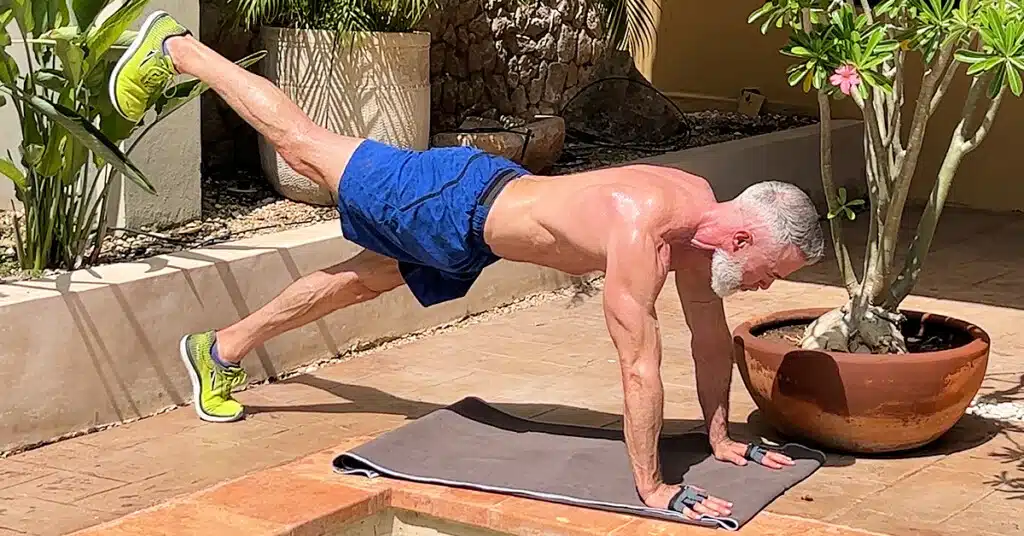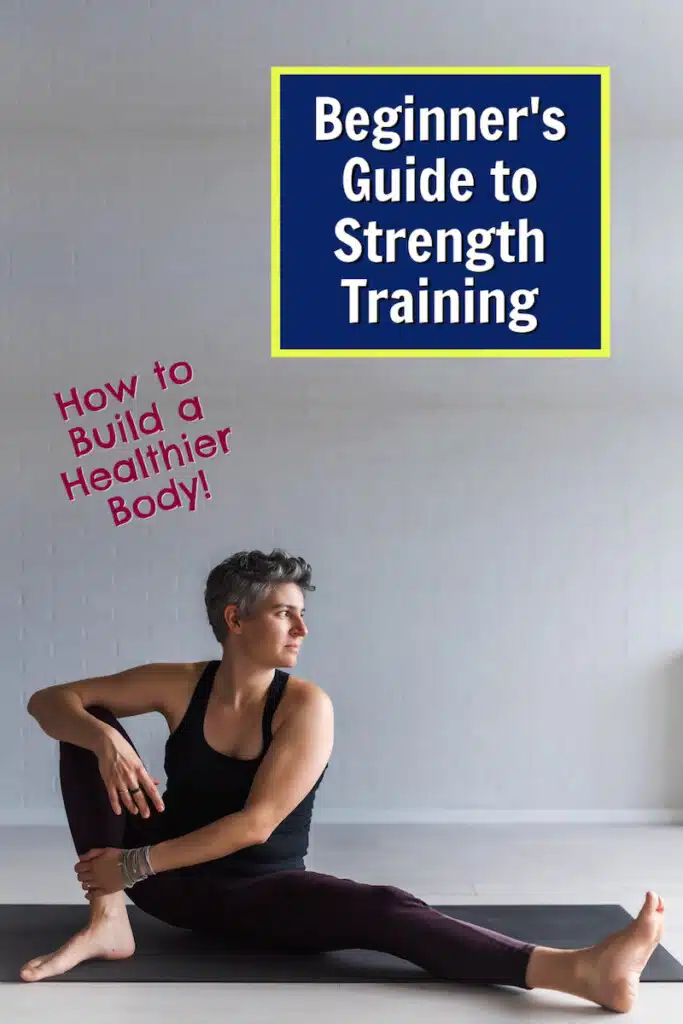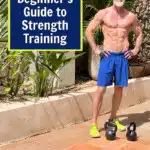Strength training isn’t just about beefing up or building muscles. It’s an essential component of a well-rounded exercise regimen, offering profound health benefits that can facilitate a longer, healthier, and more active life. However, starting a strength training routine can seem daunting if you’re a beginner. Fortunately, this comprehensive beginner’s guide to strength training provides you with everything you need to get started.
I’ve also included a video to help you get the ball rolling.
Understanding Strength Training and Its Benefits
Strength training – also called resistance training – involves exercises that make your muscles work harder than usual.
Increased demand on your muscles triggers their growth, enhancing strength, endurance, power, and the overall functionality of your body. This, in turn, boosts your metabolism and increases the number of calories you burn while at rest.
The burning-more-calories-at-rest part is particularly important, yet a benefit of strength training that many people forget to consider:
- It’s the reason that some people can maintain a stellar body composition with relatively little body fat.
- Once you have enough muscle, your body becomes like a fat-burning furnace, so you have more menu options when eating.
- It also means you can cheat on your diet occasionally without getting chubby.
Strength training exercises typically involve lifting weights or utilizing resistance bands. Still, they can also involve bodyweight exercises where your body weight provides resistance.
Resistance training in this way not only aids in building muscles but also stimulates bone growth, lowers blood pressure, and improves body composition.

Because improvement in muscle tone increases resting metabolic rate, it’s not uncommon for people to lose fat while adding muscle. This means that – though the scale may say you weigh the same – your waist and limbs firm up, and your clothes become looser on you.
Getting Started: Strength Training Basics
Starting a strength training regimen doesn’t require an expensive gym membership or a house full of fancy equipment. Here’s how to get started:
- Master the Form: Proper form is crucial to prevent injuries and ensure you’re effectively working your muscles. Before diving into strength training exercises, learn and master the correct form. Starting with bodyweight exercises can be an excellent way to do this.
- Start Slowly: When beginning, it’s vital not to rush or overdo it. Start with lighter weights and fewer repetitions, gradually increasing as your body adapts.
- Create a Routine: Consistency is key. Develop a workout schedule that fits your lifestyle and stick to it. A good starting point is two to three strength training sessions per week.
- Focus on Compound Exercises: These are exercises that engage multiple muscle groups at the same time. Examples include squats, deadlifts, and bench presses. These exercises offer more bang for your buck and are great for building foundational strength.
Essential Strength Training Exercises for Beginners
Now that you understand the basics, I’ll share some of the more essential strength training exercises that every beginner should know.
- squats
- push-ups
- deadlifts
- overhead press
- planks
For each of these essential exercises, there are many variations.
There are versions for beginners and versions for when your skill and strength advance.
Some dogmatic coaches will try to tell you there is only “one way” or “best way” to do the fundamental exercises.
But I’ve been doing this for decades, and I can tell you there are many valid ways to do each exercise:
- People have different bodies, different limb lengths, and genetic differences in mobility.
- The correct way is often any way you can do the exercise safely, pain-free, and that produces positive results.
The Squat
Squats are a great lower-body exercise that works your quads, hamstrings, and glutes. Start with bodyweight squats, gradually adding weights as you gain strength.
There are air squats, front squats, back squats, split squats, you name it. What’s key is to modify the movement so that you can do it without feeling pain in your knees or back.
Sometimes, if you modify the placement of your feet – wider or closer together – and distribute the body weight onto the soles of your feet more evenly (instead of rolling the weight mostly to one side or the other, or forward or back), that can often solve knee issues.

To protect your back, activate the muscles of your lower abdominals and glutes. That means to squeeze your buttocks a bit and keep your navel pulled in tightly (especially that plate of muscle below the navel and above the pubic bone).
Finally, keep your spine as tall as possible while also “setting your scaps” (you can activate the scapula by bringing your shoulder blades together a bit).
The Push-Up
Push-ups are an excellent bodyweight exercise that targets your chest, shoulders, and triceps. If standard push-ups are too challenging, start with knee or incline push-ups. In the video, I demonstrate decline push-ups, which are a bit harder but excellent for firming and shaping the all-important upper pecs.
Remember to keep your core muscles activated while doing push-ups; otherwise, your pelvis will droop, and your lower back will sway.
About your wrists: if they feel a bit tender, keep your hands out in front of your shoulders.
The Deadlift
Deadlifts work your entire body, targeting your hamstrings, glutes, lower back, and core. It’s crucial to learn and master the correct form to avoid injury.
Set your scaps, keep the weights or barbell close to your shins, and when you pull, think of “pulling from behind,” using your posterior chain of muscles. Do not, under any circumstance, let your glutes or abs relax while doing the actual lift (the moment you do, all the work gets dumped into your lower spine).
The Overhead Press
This exercise works your shoulders and triceps. It can be performed seated or standing with dumbbells, a barbell, kettlebells (like in the video), or even a looped band placed under the feet.
The shoulder requires a certain level of mobility and joint health to lift heavier weights. So begin with light weights (you can always do more repetitions) until you believe your shoulders are well-lubricated and ready to train heavier.
The Plank
Planks are a fantastic core exercise. They are a great way to build abdominal strength and shoulder stability. Even better than crunches, in my opinion, since the primary purpose of core muscles is to stabilize (and not just forward flexion).

So many ways to plank! With alternating arm lifts, alternating leg lifts, or bird-dogs (lifting the opposite arm and leg at the same time), on your elbows, or in the classic push-up start position. The classic plank is to simply hold a push-up start position for one full minute, then rest for 30 seconds, then repeat (for a total of 3 sets).
Try This Beginning Circuit Workout
Here’s a workout you can try. It’s fun because it’s circuit training, and you will sweat!
Do 12 repetitions of each exercise. Then, move on quickly to the next exercise in the series without a break.
Only take a 3-minute rest (use the timer on your phone) when you’ve finished all the exercises. Then repeat the entire circuit 2 more times (for a total of 3 circuits).
Said differently: each time you complete an entire circuit, you take a 3-minute break before starting again.
Modify any exercise so you can complete 12 repetitions (for example, doing push-ups with your knees on the mat or doing air squats instead of holding weights).
- air squat – 12 reps
- push-up – 12 reps
- deadlift – 12 reps
- shoulder press – 12 reps
- plank – hold for one full minute with perfect form
Bonus: Add a Pulling Exercise
After you get the hang of these five exercises, your next step will be to add pull exercises to engage the muscles of your back and biceps.
A common mistake for those new to strength training is to do more pushing exercises (chest, triceps) than pulling (back, biceps) which creates asymmetry in the body and can cause alignment problems and even injury.
The easiest way to do pulling exercises is using either a resistance band or suspension strap (such as TRX). The classic pulling exercise is the cable row. The advanced calisthenic version is the pull-up.
Once you get stronger, you can add dumbbells, barbells, and monkey bars into your pulling routine.
Fueling Your Body: The Role of Nutrition in Strength Training
Nutrition plays a significant role in strength training. In fact, its significance is underestimated by most.
Personally, I prefer an anti-inflammatory diet. I have found it to be astoundingly helpful.
To build muscle, your body needs fuel in the form of proteins, carbohydrates, and healthy fats:
- Protein: Protein is crucial for muscle repair and growth. Aim to include a source of lean protein in every meal. This could be chicken, turkey, fish, eggs, tofu, or a protein shake. If you use whey protein, I recommend you get the kind that says “whey isolate.” For plant protein powders, my favorites are unsweetened rice and hemp protein.
- Carbohydrates: Carbohydrates are your body’s primary source of energy. On an anti-inflammatory diet, most of your carbs should come from vegetables. You can add some fruit into your diet, too, to give your body the energy it needs for your workouts.
- Healthy Fats: Healthy fats, including those responsible for muscle growth, are crucial in hormone production. Avocado, almond, pecan, brazil nut, coconut, sprouted seeds, olive oil, and fatty fish are excellent sources of healthy fats.
I encourage you to consult with your medical doctor before making any significant changes to your eating habits or movement patterns.
Why Strength Training Matters
Strength training is an essential facet of maintaining optimal health and wellness. Here’s why.
Improved Body Composition: You can increase lean muscle mass and decrease body fat through strength training, improving your overall body composition. This often results in better physical appearance and increased confidence.
Increased Metabolism: As I mentioned earlier, muscle burns more calories than fat. By building muscle through strength training, you increase your resting metabolic rate, meaning you’ll burn more calories even when you’re not exercising.
Enhanced Bone Health: Regular strength training stimulates bone growth and density. This can significantly reduce the risk of osteoporosis and fractures as you age.
Better Physical Function: Strength training makes you stronger and improves your balance, coordination, and flexibility, enhancing overall physical function and reducing the risk of injury.
Conclusion: More Muscle is More Better (yes, even for women)
Muscles are beneficial, and the older you are, the more beneficial they become.
Muscle is correlated with both life expectancy and quality of life as you age.
In other words, lack of muscle tone correlates with frailty and injury.
Don’t worry about getting too bulky:
- First of all, adding even just 8 pounds of muscle is very difficult to do.
- Secondly, if you were lucky enough to add 8 pounds of muscle, it would probably look fantastic on you. You’d look lean and athletic and probably even stand taller.
- Thirdly, suppose you notice you’re getting too thick in a particular area of your body; in that case, the intervention you need is probably nutritional and has little to do with a specific exercise.
Strength training can be an empowering and transformative journey that significantly enhances your physical health and well-being.

Are you a Pinterest enthusiast like me? If so, I encourage you to pin this image to your Pinterest board on health or fitness.
As a beginner, remember to start slow, master the basics, prioritize proper form, and fuel your body with nutritious foods.
It might seem challenging initially, but with patience, consistency, and the right approach, you’ll soon begin to see and feel the benefits of strength training.
It’s never too late to start building a healthier, stronger body!
